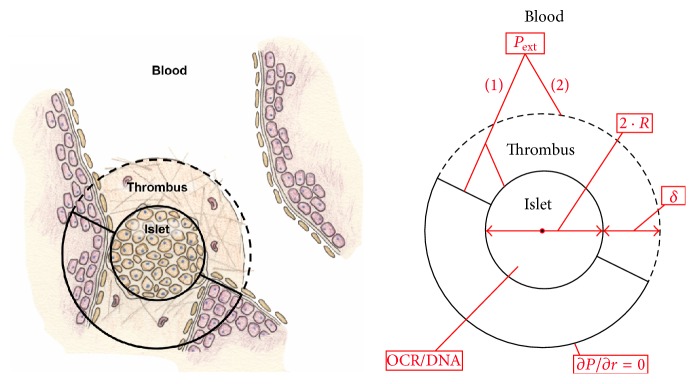Figure 1.
Schematic depicting the intraportal islet which is modeled as a spherical body containing viable oxygen-consuming cells. The transplanted islet is lodged at a bifurcation in a distal hepatic sinusoid and has access to portal blood at its proximal half-surface. The distal half of the islet equilibrates with the surrounding environment and is modeled by the presence of a no-flux boundary condition at a specified distance away from its back surface (∂P/∂r = 0). There are 4 parameters that are adjusted in this model, including (1) fractional viability, or oxygen consumption rate normalized to DNA content (OCR/DNA); (2) islet diameter (2 · R); (3) external blood P (P ext); and (4) presence or absence of thrombus with a specified thickness (δ), located only on the proximal half-surface.

